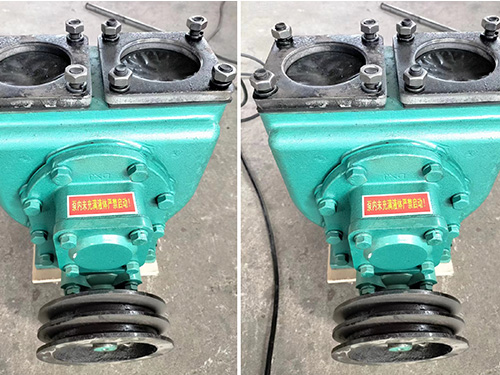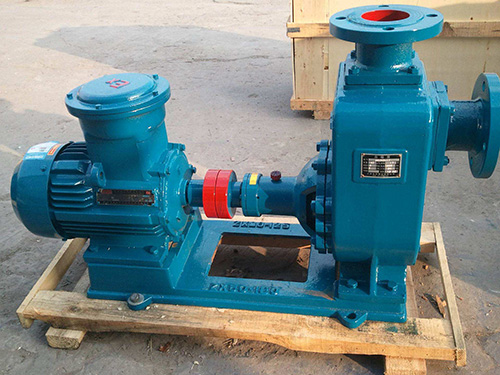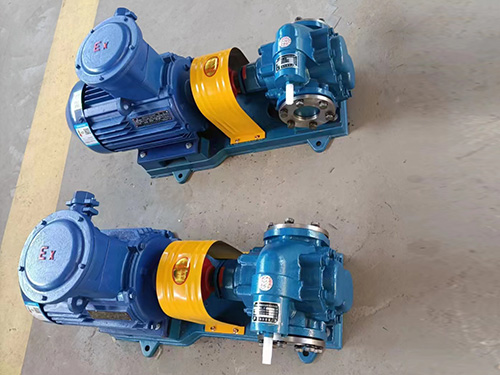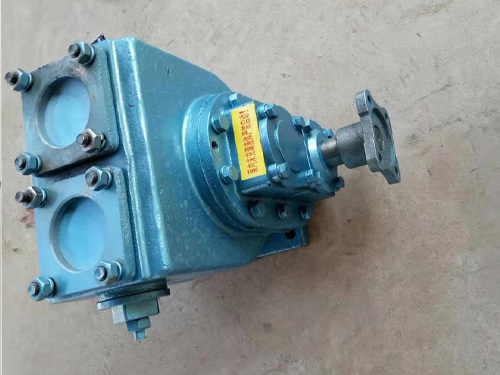Should we choose a gear pump or a rotary pump for the filling machine
2025-08-20 08:28:07
This is a very professional and common question. Choose a gear pump or a rotary pump on the filling machine. Both are positive displacement pumps with much higher accuracy than centrifugal pumps, but their working principles and characteristics
There is a significant difference, therefore it is applicable to different scenarios.
Simply put, the choice depends on the nature of the material you want to fill.
Below, I will make a detailed comparison from multiple dimensions and provide final selection recommendations.
Core Comparison: Gear Pump vs. Rotary Pump
Characteristic dimension gear pump rotor pump (usually referring to cam rotor pump, peristaltic pump, etc.)
The working principle relies on two tightly meshing gears (driving wheel and driven wheel) rotating in the pump chamber, squeezing the material from the suction end to the discharge end. Relying on two or more non-contact meshing rotors
(such as three bladed or butterfly shaped rotors) rotate to form a closed chamber for conveying materials.
High shear force. The meshing point of gears has a strong squeezing and shearing effect on materials. Low to medium. Maintain a small gap between the rotors, without direct contact, and have very little shear and rubbing on the material.
Excellent self-priming ability. Very excellent, usually better than gear pumps.
Poor ability to handle particulate matter. Particles are prone to getting stuck at the gear mesh, causing damage to the pump or product. Excellent ability. The wide flow channel and gap between the rotor allow larger particles to pass through (depending on the pump)
Model and gap).
The hygiene level is moderate. The gear meshing area is not easy to clean and can easily form hygiene blind spots. High. Easy to disassemble (CIP/SIP), smooth flow path without dead corners, in compliance with FDA, 3-A and other hygiene standards.
The wear resistance is average. The efficiency will decrease after gear wear. Excellent. Rotors are usually made of wear-resistant materials such as stainless steel and PTFE, which have a long service life.
High precision. But after long-term wear and tear, the accuracy will gradually decrease. Very high and stable. Due to non-contact and minimal wear, it can maintain high precision for a long time.
The initial cost is relatively low. The initial cost is usually high.
The maintenance frequency may be higher (due to wear and tear), but individual parts may be cheaper. Easy maintenance, long lifespan, and possibly lower overall maintenance costs.
Typical application materials include oils, lubricants, paints, inks, adhesives, and certain low viscosity chemical agents. Food (sauces, dairy products, fruit pulp, fillings), daily chemical products (toothpaste, shampoo, etc.)
Lotion), pharmaceutical (ointment, slurry), high value-added chemicals.
How to choose? Look at your materials!
When choosing a gear pump:
If the material you are filling is a low viscosity, solid particle free, shear insensitive, non sanitary fluid, a gear pump is an economical choice.
Typical example:
Lubricating oil, engine oil
Industrial paints and inks
Some adhesives
Basic chemicals (such as certain solvents, resins)
Advantages: Low cost, mature technology, able to meet basic quantitative transportation needs. Disadvantages: Cannot handle products containing particulate matter, sensitive to shearing, and with high hygiene requirements.
When choosing a rotary pump:
If the material you are filling is medium to high viscosity, contains solid particles, is sensitive to shear, or requires high hygiene standards, a rotary pump is undoubtedly a better choice. Modern high-end filling machine
Especially in the food, daily chemical, and pharmaceutical industries, the vast majority of pumps used are rotary pumps.
Typical example:
Food: tomato sauce, jam, yogurt, minced meat, filling, beverages with fruit granules, honey, syrup.
Daily chemicals: toothpaste, face cream, shampoo, bath gel, cream like products.
Pharmaceutical: ointment, gel, emulsion.
Chemical industry: Special chemicals with high added value and fear of cutting.
Advantages: gentle handling of materials, hygienic, efficient, wear-resistant, high precision and stability, extremely wide applicability. Disadvantage: The initial procurement cost is relatively high.
Summary and final recommendations
1. Primary consideration factor: Material properties
Are there any particles? → Yes: Choose a rotary pump.
Are you afraid of cutting? (For example, the structure and taste of lotion and sauce are very important) → Fear: choose rotor pump.
Is the hygiene requirement high? (Food, medicine, cosmetics) → High: Choose a rotary pump.
Is the viscosity high? (Like paste or sauce) → High: Rotary pump is more suitable.
Just a regular low viscosity liquid, no special requirements? Gear pumps can be used as an economic solution.
2. Secondary considerations: cost and long-term operation
Due to limited budget and simple materials, consider gear pumps.
Valuing long-term stability, low maintenance costs, and reducing product losses → The overall cost of ownership for rotary pumps may be lower.
Conclusion: For the vast majority of modern filling applications, especially in the food, beverage, daily chemical, and pharmaceutical industries, rotary pumps are preferred due to their excellent hygiene performance, gentle handling methods, and wide material adaptability
It has become the absolute mainstream and preferred choice. Only when dealing with very ordinary and low demand liquids, cost-effective gear pumps still have a place.
Finally, it is recommended to provide your material samples to pump manufacturers or filling machine suppliers for actual testing, as this is the most reliable option.

The YHCB high flow pump has the characteristics of large flow rate, high head, small settli...

The CYZ centrifugal pump adopts an axial return liquid pump body structure, which is compos...

Copper gear pump (KCB type) is suitable for conveying lubricating oil or other liquids with...

The car mounted circular arc gear pump can be installed on the car and driven by the output...



